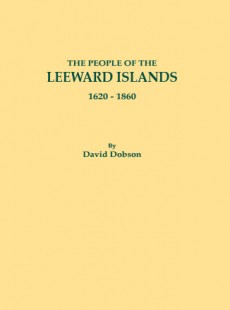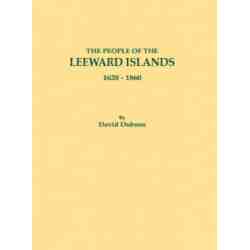The Leeward Islands form part of the Lesser Antilles, which stretch from Puerto Rico to the fringes of Venezuela. Beginning in the seventeenth century, the Lesser Antilles attracted immigrants from Europe, initially from Spain but soon also from the British Isles, France, the Netherlands, and Scandinavia. The Leeward Islands consist of Antigua, Barbuda, St. Kitts, Nevis, Montserrat, the Virgin Islands, St. Bartholomew, St. Martin, Guadeloupe, St. Thomas, St. Croix, and Anguilla.
During the sixteenth century the Spanish controlled the West Indies however the English, the Dutch and the French voyaged to the Caribbean, where they engaged in piracy and raiding Spanish settlements. By the early seventeenth century they were beginning to establish permanent settlements there, such as Barbados in 1626.
The waning of Spanish power during the seventeenth century enabled Britain, France, and the Netherlands to colonize islands in the West Indies, especially the Leeward and Windward Islands. During the eighteenth century, Britain and France were generally engaged in a power struggle, which meant that from time to time colonies changed hands; for example, Martinique was occupied by the British between 1762 and 1763, and from 1794 to 1815. The end of the Seven Years’ War between Britain and France in 1763 resulted in French colonies, such as St. Vincent and Dominica, being transferred to British rule.
While most of the people in the Leewards today are of African origin, there is little data in colonial records to positively identify individuals by race; nevertheless, the people listed in this work are almost certainly of European origin–and most of them derive from Great Britain and Ireland. The majority of the latter possess English roots, with a significant minority coming from Scotland and Ireland. During the seventeenth and eighteenth centuries, the British government disposed of rebels and felons by transporting them for sale to the American Plantations; Cromwell sent Irish rebels, James II sent Monmouth’s rebels; and the Hanoverian kings sent Jacobites from England and Scotland, as well as thousands of petty criminals. These movements account for much of the Leewards’ Caucasian stock. Economic opportunities, especially in the tobacco, sugar, and slave trades attracted many emigrants–notably after 1763–to the “Ceded Islands,” those Leeward Islands that were granted to Great Britain as part of the settlement after the Seven Years’ War. Many of their descendants, both black and white, have in recent years chosen to immigrate to North America and Europe–all of which contributes to the Leeward Islands’ complex and fascinating demographic and genealogical makeup.
This book from David Dobson is based on research into manuscript and published sources, mainly located in Great Britain, but also in the West Indies.


